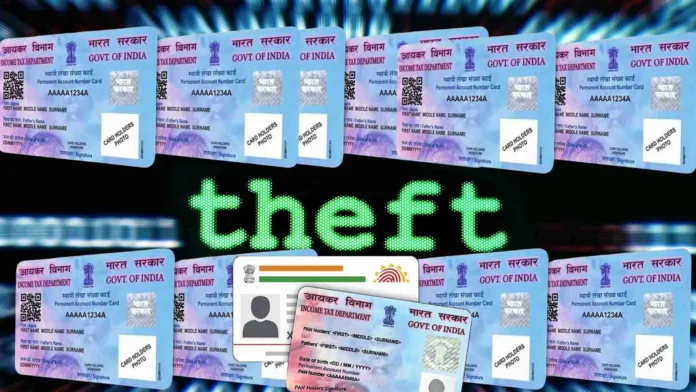In recent times, a troubling trend has emerged across India: an increasing number of income tax and GST notices being issued to individuals from the lower middle class. While the elite and high-net-worth individuals have always been under the tax radar, it is now the salaried employees, small business owners like vegetable seller, street vendors, and retired persons who are facing scrutiny.
A key driver of this surge is the widespread misuse of Permanent Account Numbers (PAN) and incidents of identity theft.
This comprehensive guide aims to break down the issue, highlight the risks, and provide actionable steps to help you protect yourself from becoming a victim.
Why the Spike in Tax Notices?
1. Digitization of Compliance and AI Integration
With the income tax department increasingly relying on artificial intelligence and data analytics, the system now flags discrepancies automatically. If your PAN has been misused, any anomalies—such as GST registrations or transactions that don’t match your profile—can trigger a notice.
2. Rising PAN Misuse in GST Frauds
Fraudsters are using stolen PAN and Aadhaar data to create fake GST registrations. These are often used to generate bogus invoices, claim false Input Tax Credits (ITC), and defraud the government. Innocent PAN holders are left dealing with the aftermath—legal notices, tax liabilities, and reputational damage.
3. Weak Awareness Among Lower-Middle-Class Taxpayers
Many individuals in this segment are unaware of how their financial identity could be exploited. This lack of awareness makes them easy targets for scammers and also leaves them unprepared when legal notices arrive.
How PAN Misuse Happens
Data Leaks: From KYC documents at mobile stores to housing societies and even government databases, PAN information is not always securely handled.
Phishing Scams: Fraudulent emails, SMS, and calls that trick users into sharing personal data.
Third-party Misuse: Agents or intermediaries in loan processing, insurance, or real estate may misuse PAN without the owner’s knowledge.
Early Warning Signs
- You receive SMS/email alerts for GST filings you never made.
- Your Form 26AS or AIS (Annual Information Statement) reflects transactions you don’t recognize.
- Unfamiliar GSTINs (Goods and Services Tax Identification Numbers) appear under your PAN.
- You receive income tax notices for non-disclosure of income or undisclosed assets.
Steps to Detect and Report PAN Misuse
1. Check GST Registrations Linked to Your PAN
- Visit the official GST Portal (https://www.gst.gov.in/)
- Navigate to “Search Taxpayer”
- Select “Search by PAN”
- Enter your PAN to view associated GSTINs
- If any registration is suspicious, report it using the grievance redressal portal or helpline
2. Verify Income Tax Records
- Log in to the Income Tax e-filing portal (https://www.incometax.gov.in/)
- Check your Form 26AS and AIS
- Look out for TDS, income, or transactions not linked to your activity
3. Monitor Your Credit Profile
- Use credit bureaus like CIBIL, Equifax, or Experian to check your credit report
- Look for unauthorized loans or credit inquiries
4. Lodge a Formal Complaint
- File an FIR with the police for identity theft
- Notify the GSTN and Income Tax Department via official channels
- Inform your bank and request alerts for suspicious transactions
Proactive Steps to Prevent Identity Theft
- Avoid Unnecessary Sharing of PAN
- Do not share photocopies of your PAN unless mandatory.
- If you must share, watermark the copy stating the purpose.
- Secure Physical and Digital Documents
- Store your PAN card in a secure place.
- Avoid saving PAN images on unsecured devices or cloud apps.
- Be Cautious with Emails and Links
- Never click on unknown links claiming to be from tax authorities or banks.
- Verify the source before responding to any request for financial details.
- Enable Two-Factor Authentication
- Activate 2FA for your financial accounts and government portals.
- Regular Audits and Alerts
- Set reminders to check your tax records and credit scores every 3–6 months.
- Subscribe to SMS/email alerts for all financial activities.
What to Do If You Receive a Notice
- Don’t Panic: Notices are not always indicative of wrongdoing; they could simply be for clarification.
- Consult a Tax Professional: A chartered accountant or tax lawyer can help you respond appropriately.
- File a Response Within the Deadline: Use the income tax portal to file a suitable response.
- Keep Documentation Ready: Gather all bank statements, Form 16s, TDS certificates, and correspondence.
Conclusion
The growing number of tax and GST notices being sent to the lower middle class is a wake-up call. With fraudsters getting smarter and compliance systems becoming stricter, the only way to stay safe is to be informed, proactive, and vigilant. Your PAN is not just a number—it’s your financial identity. Guard it like you would your most valuable asset.
By adopting the best practices outlined in this article and regularly monitoring your financial and tax footprints, you can protect yourself from identity theft, avoid unnecessary legal trouble, and ensure peace of mind.





